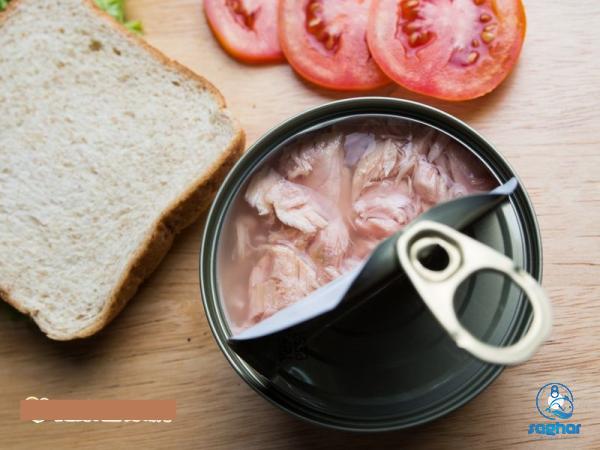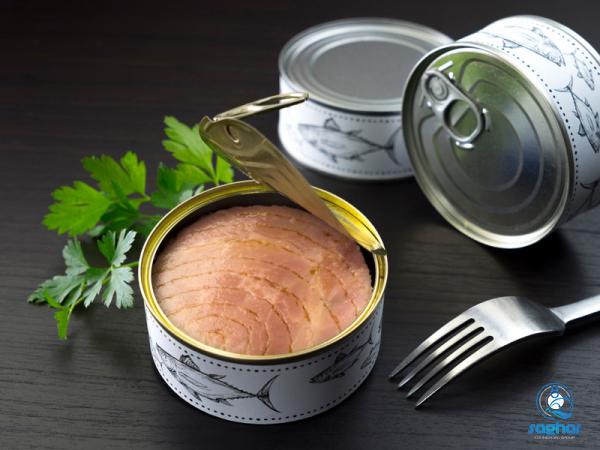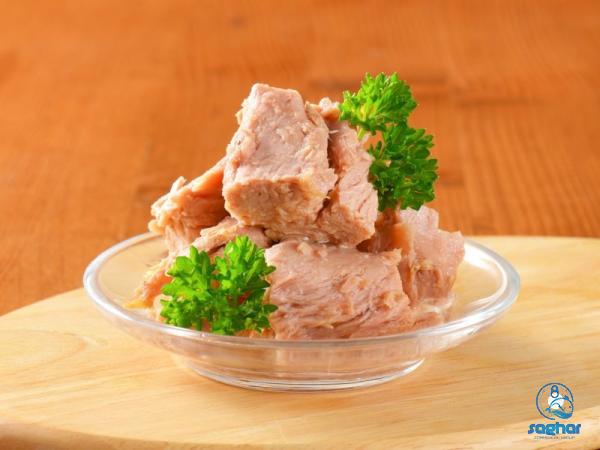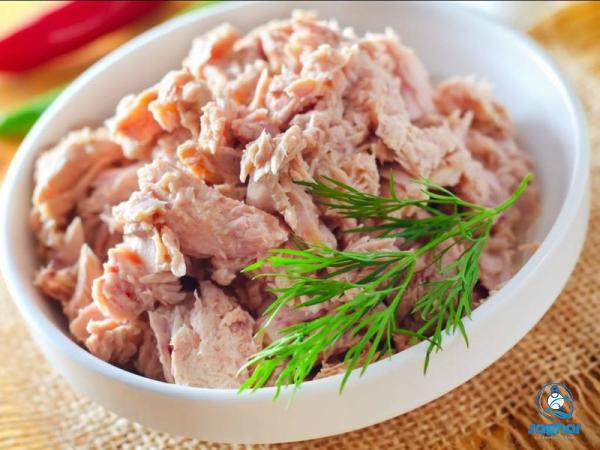The Quest for the Best Quality Canned Tuna: A Comprehensive Overview Introduction: Canned tuna has become a staple in many households around the world. It is not only convenient and easy to prepare, but also a good source of lean protein and omega-3 fatty acids. However, with numerous brands and varieties available on the market, it can be overwhelming to determine which canned tuna offers the best quality. In this article, we will delve into the factors that define top-quality canned tuna, explore popular brands, understand different types of canned tuna, and highlight sustainable and ethical considerations. Defining Top-Quality Canned Tuna: 1. Species: The type of tuna used in the can greatly affects its taste and texture. The most common species used for canned tuna include skipjack, yellowfin, albacore, and bluefin. Each species has distinct qualities, and personal preferences may vary. 2. Fishing Methods: The fishing method employed can impact the overall sustainability and quality of canned tuna. Four primary fishing methods include purse seine, longline, troll, and pole-and-line. Practices such as pole-and-line fishing are considered more sustainable and tend to result in higher-quality tuna. 3. Processing Techniques: The processing techniques used during canning significantly influence the quality and taste of canned tuna. Rapid processing immediately after catching, along with the use of high-quality ingredients, can enhance the flavor and texture. Popular Brands of Canned Tuna: 1. Bumble Bee: Bumble Bee is a well-known brand that offers a wide range of canned tuna. They prioritize sustainable fishing practices and provide traceability information through their “Trace My Catch” program. Bumble Bee’s albacore and yellowfin tuna are particularly praised for their high-quality and superior taste.
canned food
 2. Wild Planet: Wild Planet is renowned for its sustainable fishing practices and commitment to providing premium-quality tuna. Their pole-and-line caught skipjack and albacore tuna receive positive reviews for their exceptional taste and texture. 3. Safe Catch: Safe Catch stands out for its rigorous testing procedures to ensure mercury levels in their tuna are exceptionally low. Their attention to quality and safety makes them a popular choice among health-conscious consumers. Different Types of Canned Tuna: 1. Solid Tuna: This type of canned tuna contains large, firm chunks of fish, which retain their shape and texture. Solid tuna is often preferred for salads, sandwiches, and other recipes where the fish needs to hold its form. 2. Chunk Light Tuna: Chunk light tuna is made from smaller pieces of tuna, often a mix of different species. It has a more shredded texture and milder flavor compared to solid tuna. Chunk light tuna is commonly used in casseroles, pasta dishes, and dips. 3. Flaked Tuna: Flaked tuna consists of smaller, broken pieces of fish that are more delicate and easier to spread. It is ideal for making tuna salad, spreads, and sandwiches.
2. Wild Planet: Wild Planet is renowned for its sustainable fishing practices and commitment to providing premium-quality tuna. Their pole-and-line caught skipjack and albacore tuna receive positive reviews for their exceptional taste and texture. 3. Safe Catch: Safe Catch stands out for its rigorous testing procedures to ensure mercury levels in their tuna are exceptionally low. Their attention to quality and safety makes them a popular choice among health-conscious consumers. Different Types of Canned Tuna: 1. Solid Tuna: This type of canned tuna contains large, firm chunks of fish, which retain their shape and texture. Solid tuna is often preferred for salads, sandwiches, and other recipes where the fish needs to hold its form. 2. Chunk Light Tuna: Chunk light tuna is made from smaller pieces of tuna, often a mix of different species. It has a more shredded texture and milder flavor compared to solid tuna. Chunk light tuna is commonly used in casseroles, pasta dishes, and dips. 3. Flaked Tuna: Flaked tuna consists of smaller, broken pieces of fish that are more delicate and easier to spread. It is ideal for making tuna salad, spreads, and sandwiches.
Specifications of canned food
 Sustainable and Ethical Considerations: 1. Dolphin-Safe Certification: To protect dolphins from accidental entanglement, it is important to look for labels such as “Dolphin Safe” or “Friend of the Sea” on canned tuna products. These certifications indicate that the fishing methods used do not harm or endanger dolphins. 2. MSC Certification: The Marine Stewardship Council (MSC) certification ensures that the canned tuna is sourced from fisheries that meet strict sustainability standards. Choosing MSC-certified products promotes sustainable fishing practices and protects marine ecosystems. 3. Ethical Fishing Practices: Supporting brands that prioritize ethical fishing practices, such as pole-and-line or purse seine with minimal bycatch, can help reduce environmental impact. Additionally, certain brands may support social causes or engage in fair trade practices, making them more aligned with ethical considerations. Conclusion: Finding the best quality canned tuna involves considering factors such as species, fishing methods, and processing techniques. Brands like Bumble Bee, Wild Planet, and Safe Catch have a reputation for offering high-quality canned tuna. Additionally, understanding the different types of canned tuna and considering sustainability and ethical concerns can contribute to making an informed choice. Whether you prefer solid, chunk light, or flaked tuna, prioritizing quality and ethical considerations enhances both the taste of your dishes and your commitment to a sustainable future.I. Quality Considerations for Canned Tuna When it comes to selecting the best quality canned tuna, several factors should be taken into consideration. 1. Species: The species of tuna used in the can impacts the taste and texture of the fish. Skipjack tuna is the most commonly used species for canned tuna due to its affordability and availability. It has a mild flavor and is ideal for salads and sandwiches. Yellowfin tuna, known for its firm flesh and rich flavor, is another popular choice. Albacore, often referred to as white tuna, has a mild and delicate flavor, making it perfect for dishes where the fish takes center stage. Bluefin tuna is less commonly found in canned form
Sustainable and Ethical Considerations: 1. Dolphin-Safe Certification: To protect dolphins from accidental entanglement, it is important to look for labels such as “Dolphin Safe” or “Friend of the Sea” on canned tuna products. These certifications indicate that the fishing methods used do not harm or endanger dolphins. 2. MSC Certification: The Marine Stewardship Council (MSC) certification ensures that the canned tuna is sourced from fisheries that meet strict sustainability standards. Choosing MSC-certified products promotes sustainable fishing practices and protects marine ecosystems. 3. Ethical Fishing Practices: Supporting brands that prioritize ethical fishing practices, such as pole-and-line or purse seine with minimal bycatch, can help reduce environmental impact. Additionally, certain brands may support social causes or engage in fair trade practices, making them more aligned with ethical considerations. Conclusion: Finding the best quality canned tuna involves considering factors such as species, fishing methods, and processing techniques. Brands like Bumble Bee, Wild Planet, and Safe Catch have a reputation for offering high-quality canned tuna. Additionally, understanding the different types of canned tuna and considering sustainability and ethical concerns can contribute to making an informed choice. Whether you prefer solid, chunk light, or flaked tuna, prioritizing quality and ethical considerations enhances both the taste of your dishes and your commitment to a sustainable future.I. Quality Considerations for Canned Tuna When it comes to selecting the best quality canned tuna, several factors should be taken into consideration. 1. Species: The species of tuna used in the can impacts the taste and texture of the fish. Skipjack tuna is the most commonly used species for canned tuna due to its affordability and availability. It has a mild flavor and is ideal for salads and sandwiches. Yellowfin tuna, known for its firm flesh and rich flavor, is another popular choice. Albacore, often referred to as white tuna, has a mild and delicate flavor, making it perfect for dishes where the fish takes center stage. Bluefin tuna is less commonly found in canned form
buy canned food
 2. Fishing Methods: The method used to catch the tuna can affect both the sustainability and quality of the fish. Purse seine fishing involves large nets that encircle schools of tuna. This method tends to result in mixed-quality catches, as fish of different sizes and species are caught together. Longline fishing, on the other hand, uses a main line with baited hooks attached, resulting in individually caught fish. This method reduces bycatch and is generally considered more sustainable. Troll fishing involves towing lures behind a moving boat, targeting a specific species of tuna. This method allows for the selection of larger and higher-quality fish. Pole-and-line fishing is considered the most sustainable and high-quality method, as it involves catching tuna one by one using a baited hook attached to a line held by hand. 3. Processing Techniques: The processing techniques employed during canning play a crucial role in determining the quality of the tuna. Freshness is key, as tuna should be processed quickly after being caught to ensure optimal flavor and texture. High-quality ingredients, such as olive oil or water, should be used to pack the fish. It is also important to consider whether the tuna is hand-packed or machine-packed. Hand-packed tuna tends to have larger, firmer chunks, while machine-packed tuna may be more fragmented. II. Popular Brands of Canned Tuna 1. Bumble Bee: Bumble Bee is one of the leading brands in the canned tuna market, known for its wide variety of products. The brand prioritizes sustainability and offers tuna that is MSC-certified. Bumble Bee’s albacore and yellowfin tuna are particularly praised for their high-quality texture and taste. The company also promotes transparency with their “Trace My Catch” program, allowing consumers to learn where their fish was caught and processed. 2. Wild Planet: Wild Planet is a brand that is committed to sustainable fishing practices. They exclusively use pole-and-line fishing methods, ensuring that each fish is individually caught with minimal bycatch. The brand’s skipjack and albacore tuna are highly regarded for their exceptional taste and texture. Wild Planet also supports sustainable fishing organizations and advocates for responsible seafood consumption. 3. Safe Catch: Safe Catch is a brand that focuses on food safety and sustainability. They test every individual fish for mercury levels, ensuring that their tuna contains lower levels of mercury than regulatory standards. Safe Catch sources their tuna from verified sustainably caught stocks and uses minimal processing to preserve the natural flavors of the fish. Their products are particularly appealing to health-conscious consumers.
2. Fishing Methods: The method used to catch the tuna can affect both the sustainability and quality of the fish. Purse seine fishing involves large nets that encircle schools of tuna. This method tends to result in mixed-quality catches, as fish of different sizes and species are caught together. Longline fishing, on the other hand, uses a main line with baited hooks attached, resulting in individually caught fish. This method reduces bycatch and is generally considered more sustainable. Troll fishing involves towing lures behind a moving boat, targeting a specific species of tuna. This method allows for the selection of larger and higher-quality fish. Pole-and-line fishing is considered the most sustainable and high-quality method, as it involves catching tuna one by one using a baited hook attached to a line held by hand. 3. Processing Techniques: The processing techniques employed during canning play a crucial role in determining the quality of the tuna. Freshness is key, as tuna should be processed quickly after being caught to ensure optimal flavor and texture. High-quality ingredients, such as olive oil or water, should be used to pack the fish. It is also important to consider whether the tuna is hand-packed or machine-packed. Hand-packed tuna tends to have larger, firmer chunks, while machine-packed tuna may be more fragmented. II. Popular Brands of Canned Tuna 1. Bumble Bee: Bumble Bee is one of the leading brands in the canned tuna market, known for its wide variety of products. The brand prioritizes sustainability and offers tuna that is MSC-certified. Bumble Bee’s albacore and yellowfin tuna are particularly praised for their high-quality texture and taste. The company also promotes transparency with their “Trace My Catch” program, allowing consumers to learn where their fish was caught and processed. 2. Wild Planet: Wild Planet is a brand that is committed to sustainable fishing practices. They exclusively use pole-and-line fishing methods, ensuring that each fish is individually caught with minimal bycatch. The brand’s skipjack and albacore tuna are highly regarded for their exceptional taste and texture. Wild Planet also supports sustainable fishing organizations and advocates for responsible seafood consumption. 3. Safe Catch: Safe Catch is a brand that focuses on food safety and sustainability. They test every individual fish for mercury levels, ensuring that their tuna contains lower levels of mercury than regulatory standards. Safe Catch sources their tuna from verified sustainably caught stocks and uses minimal processing to preserve the natural flavors of the fish. Their products are particularly appealing to health-conscious consumers.
canned food + buy and sell
 III. Different Types of Canned Tuna 1. Solid Tuna: Solid tuna refers to larger, firmer chunks of tuna that retain their shape when canned. This type of canned tuna is often considered high-quality and is preferred for salads, sandwiches, and other recipes where the texture of the fish is important. 2. Chunk Light Tuna: Chunk light tuna is made from smaller pieces of tuna that are more shredded in texture. It is commonly a mix of different species, including skipjack and yellowfin. Chunk light tuna has a milder flavor compared to solid tuna and is often used in casseroles, pasta dishes, and tuna spreads. 3. Flaked Tuna: Flaked tuna consists of smaller, broken pieces of fish that are easily spreadable. It has a delicate texture and is commonly used in making tuna salad, sandwiches, and dips. IV. Sustainable and Ethical Considerations In addition to quality, many consumers are concerned about the sustainability and ethical aspects of the canned tuna they purchase. Here are some considerations to bear in mind: 1. Dolphin-Safe Certification: Look for labels such as “Dolphin Safe” or “Friend of the Sea” on canned tuna products. These certifications indicate that the fishing methods used do not harm or endanger dolphins. The use of methods such as purse seine nets that reduce dolphin bycatch is an important factor in sustainable and ethical tuna fishing. 2. Marine Stewardship Council (MSC) Certification: The MSC certification ensures that the canned tuna is sourced from fisheries that meet strict sustainability guidelines. MSC-certified products support the conservation of fish stocks and the protection of marine ecosystems. 3. Ethical Fishing Practices: Some brands prioritize ethical fishing practices, such as pole-and-line fishing or actively working to reduce bycatch. By choosing brands that engage in ethical practices, consumers can play a role in minimizing the environmental impact of the tuna industry and promoting sustainable fishing. Conclusion Selecting the best quality canned tuna involves considering various factors, including the species of tuna used, fishing methods employed, and processing techniques. Brands like Bumble Bee, Wild Planet, and Safe Catch are known for their high-quality products and commitment to sustainability. Understanding the different types of canned tuna, such as solid, chunk light, and flaked, allows consumers to choose the most suitable option for their culinary needs. Additionally, considering sustainability and ethical concerns, such as certifications and fishing practices, contributes to an environmentally conscious and responsible choice. By prioritizing both quality and ethical considerations, consumers can enjoy the superior taste and nutritional benefits of canned tuna while supporting sustainable fishing practices.
III. Different Types of Canned Tuna 1. Solid Tuna: Solid tuna refers to larger, firmer chunks of tuna that retain their shape when canned. This type of canned tuna is often considered high-quality and is preferred for salads, sandwiches, and other recipes where the texture of the fish is important. 2. Chunk Light Tuna: Chunk light tuna is made from smaller pieces of tuna that are more shredded in texture. It is commonly a mix of different species, including skipjack and yellowfin. Chunk light tuna has a milder flavor compared to solid tuna and is often used in casseroles, pasta dishes, and tuna spreads. 3. Flaked Tuna: Flaked tuna consists of smaller, broken pieces of fish that are easily spreadable. It has a delicate texture and is commonly used in making tuna salad, sandwiches, and dips. IV. Sustainable and Ethical Considerations In addition to quality, many consumers are concerned about the sustainability and ethical aspects of the canned tuna they purchase. Here are some considerations to bear in mind: 1. Dolphin-Safe Certification: Look for labels such as “Dolphin Safe” or “Friend of the Sea” on canned tuna products. These certifications indicate that the fishing methods used do not harm or endanger dolphins. The use of methods such as purse seine nets that reduce dolphin bycatch is an important factor in sustainable and ethical tuna fishing. 2. Marine Stewardship Council (MSC) Certification: The MSC certification ensures that the canned tuna is sourced from fisheries that meet strict sustainability guidelines. MSC-certified products support the conservation of fish stocks and the protection of marine ecosystems. 3. Ethical Fishing Practices: Some brands prioritize ethical fishing practices, such as pole-and-line fishing or actively working to reduce bycatch. By choosing brands that engage in ethical practices, consumers can play a role in minimizing the environmental impact of the tuna industry and promoting sustainable fishing. Conclusion Selecting the best quality canned tuna involves considering various factors, including the species of tuna used, fishing methods employed, and processing techniques. Brands like Bumble Bee, Wild Planet, and Safe Catch are known for their high-quality products and commitment to sustainability. Understanding the different types of canned tuna, such as solid, chunk light, and flaked, allows consumers to choose the most suitable option for their culinary needs. Additionally, considering sustainability and ethical concerns, such as certifications and fishing practices, contributes to an environmentally conscious and responsible choice. By prioritizing both quality and ethical considerations, consumers can enjoy the superior taste and nutritional benefits of canned tuna while supporting sustainable fishing practices.

Your comment submitted.